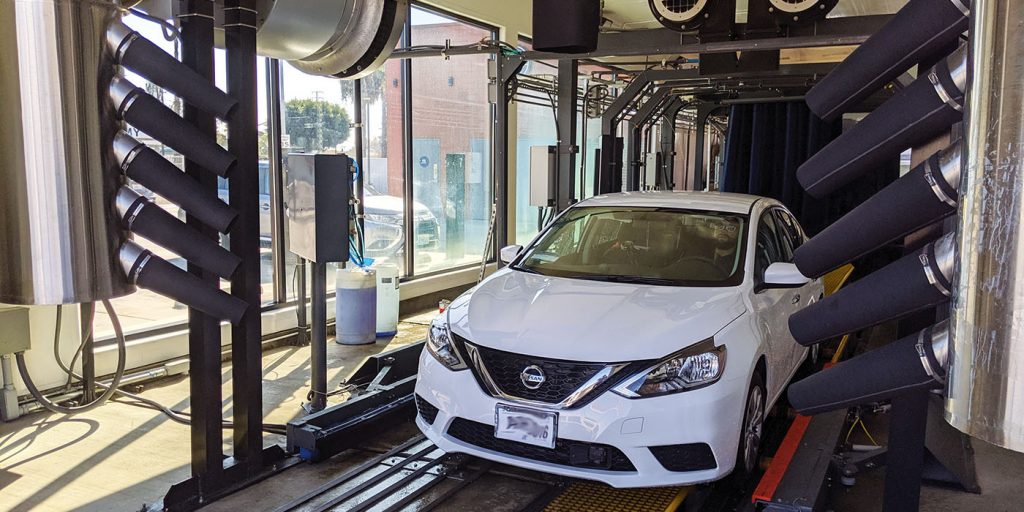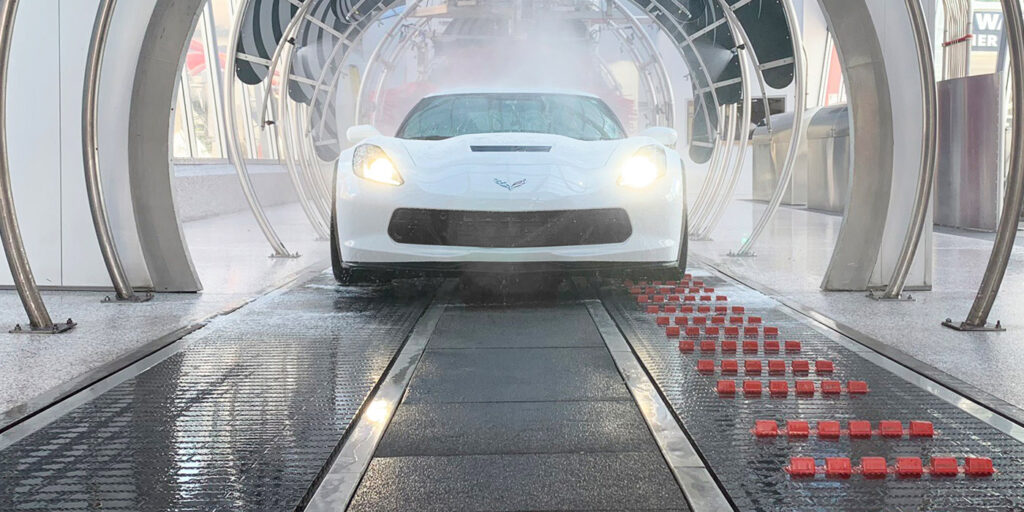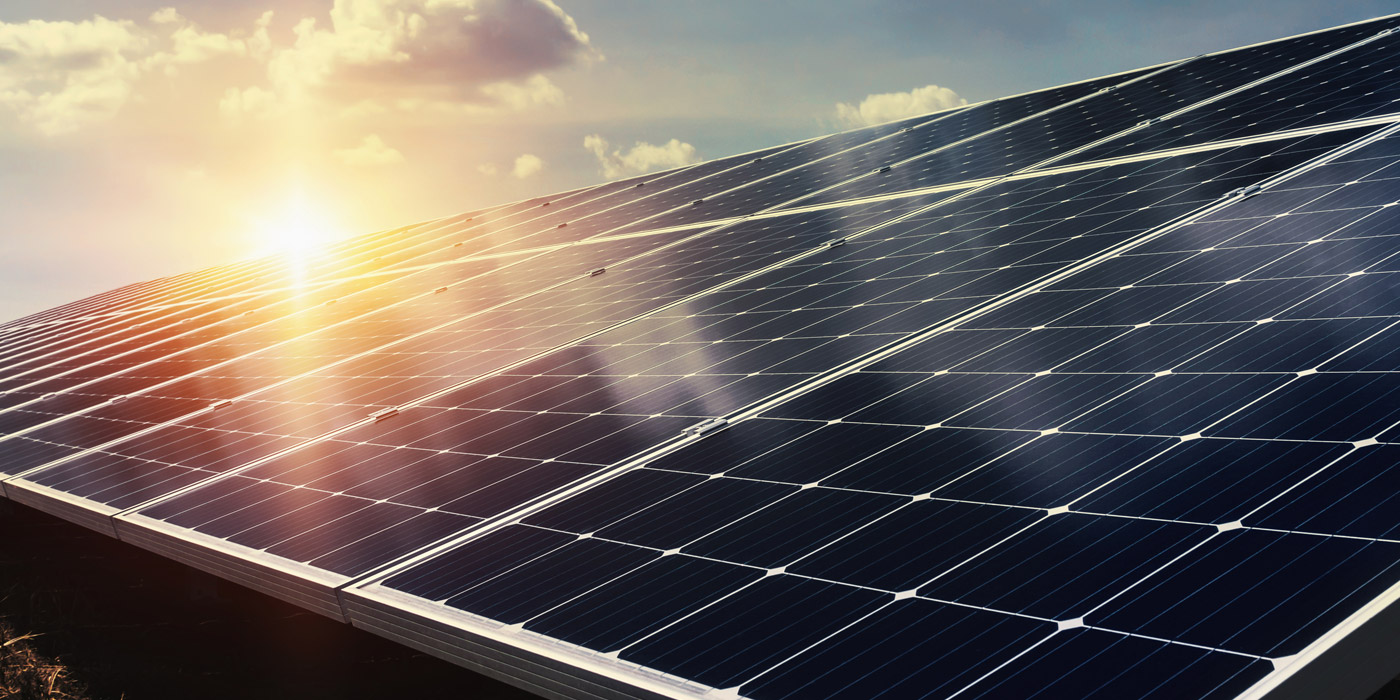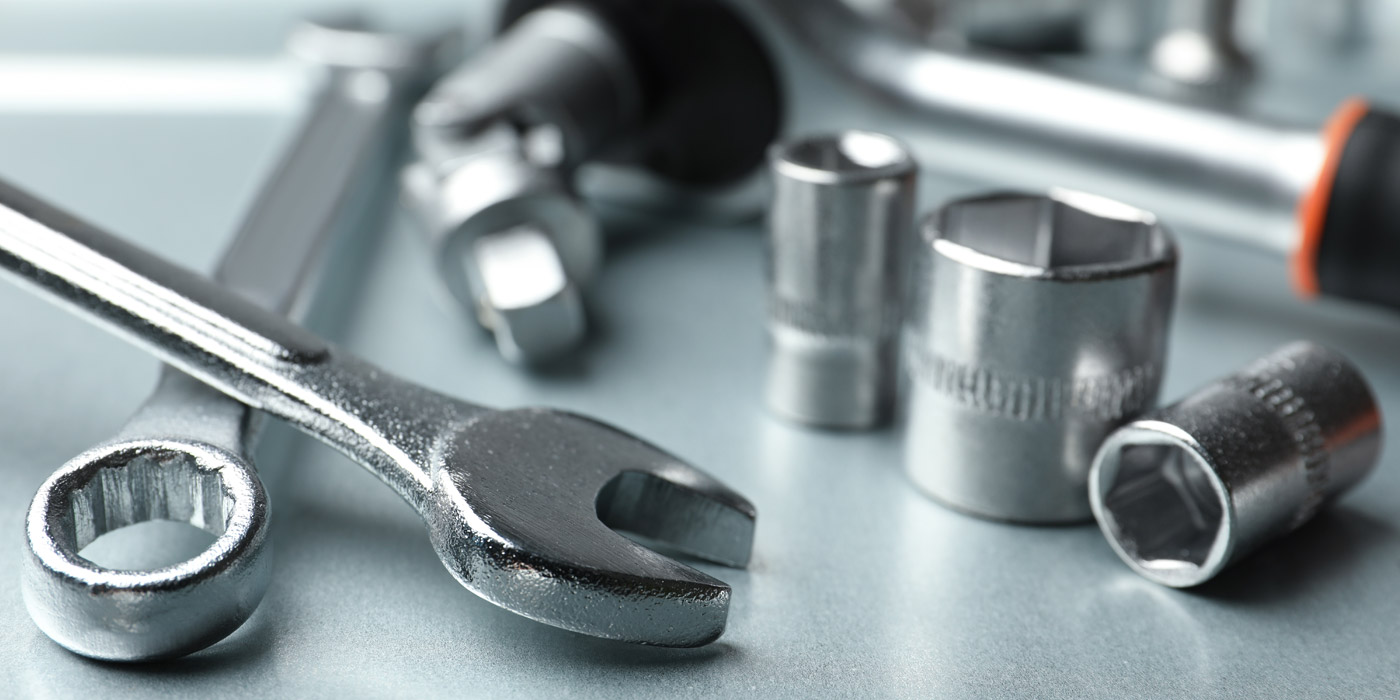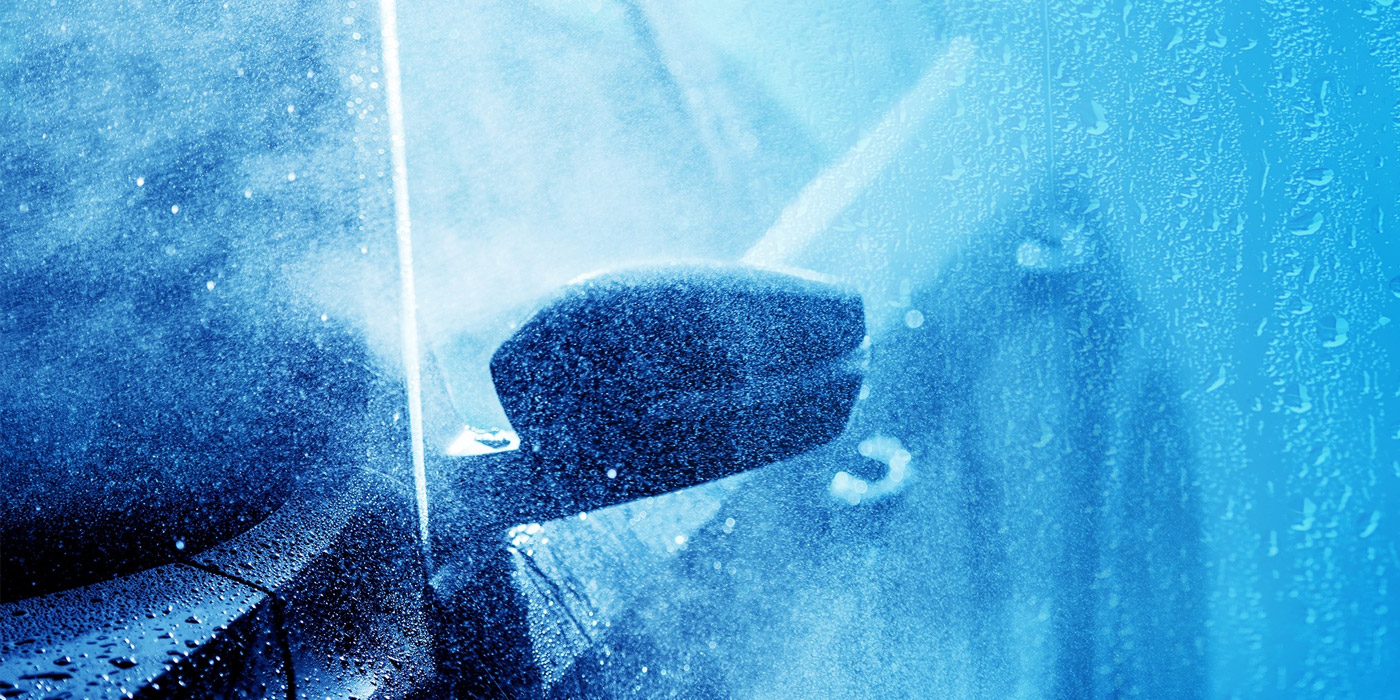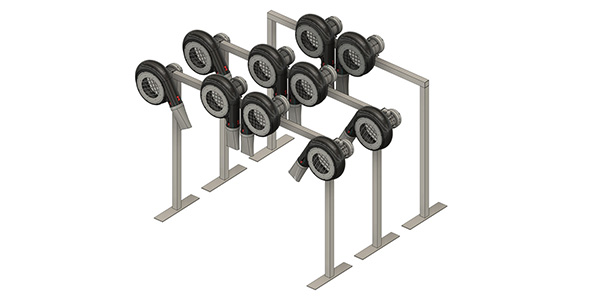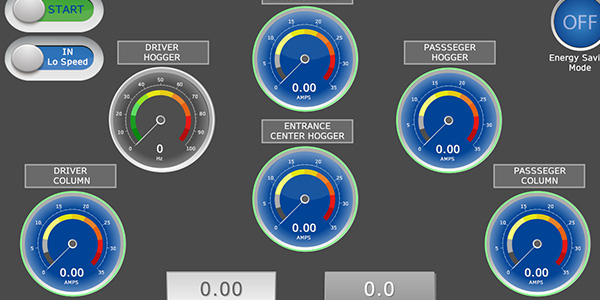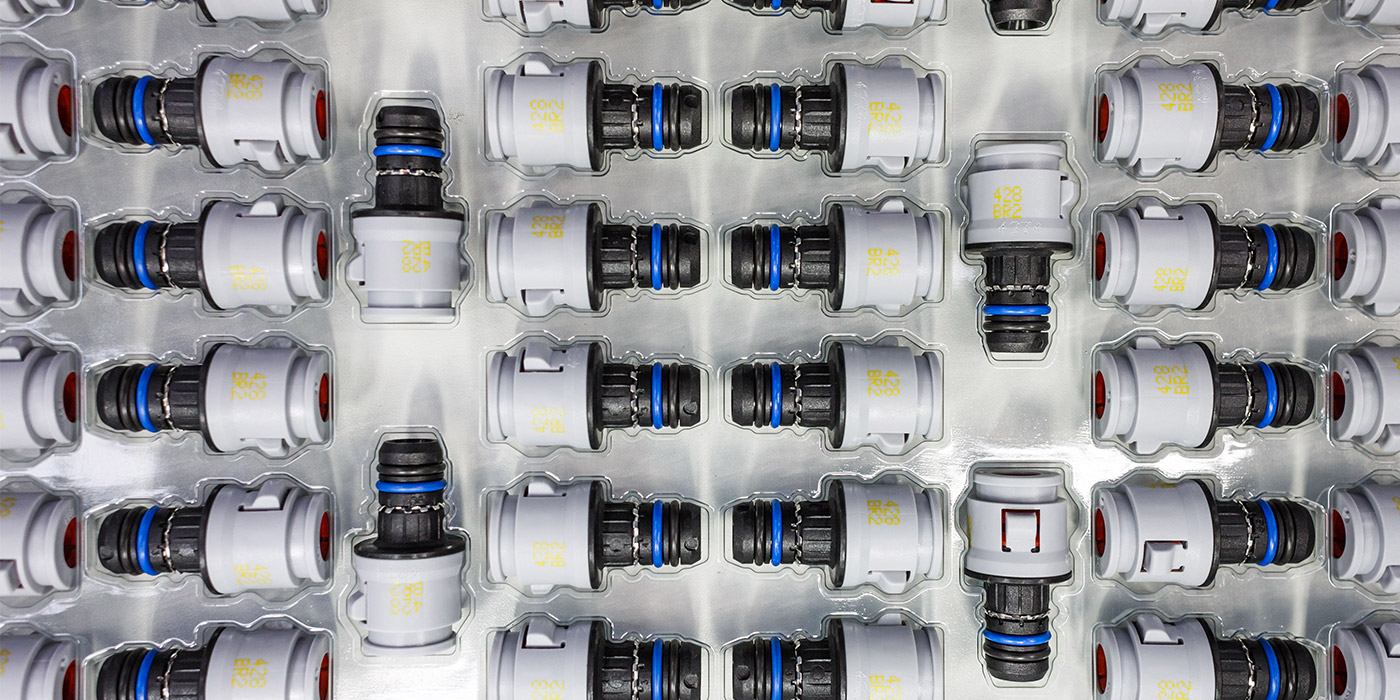The word “dryer” likely evokes an image of a machine like a clothes dryer or hair dryer — one that uses heat to evaporate leftover water. So, the idea of carwash “dryers” can be a bit misleading. According to Cheryl Ehmen, owner/chief executive manager of Aerodry Systems LLC, “It is important to note that most ‘dryers’ do not use or produce heated air and therefore are not really dryers. Instead, they are ‘blowers,’ designed to strip residual water off of an already clean vehicle.”
That being said, when cars come out wet on the other end of the drying process, operators are apt to blame the quality of the blowers themselves. However, before dissing the equipment, you need to take a look at your entire carwash process to be certain that the steps leading up to the blowers aren’t negatively impacting your final results. Therefore, let’s look at some common myths operators have about drying and see if we can bust them.
Myth: Blowers don’t need much space
According to Arthur D. Stephens, president of International Drying Corp., theoretically, you can get a bone-dry vehicle from blowers — which is, after all, the goal of every operator in the industry — but realistically, it usually doesn’t happen. Why? For one thing, he says, operators tend to shy away from committing to the space and expense needed for blowers to get that bone-dryness.
“We spend upwards of $150,000 for computer systems, vacuums, conveyors and other equipment, yet we wonder why our $35,000 drying systems don’t dry. Ask yourself what the first complaint we get is when someone gets a wash. The drying process is so undervalued in our industry. To do it correctly will cost money, but the results far outweigh the cost,” Stephens argues.
Ehmen agrees that one of the most common mistakes operators make is not providing adequate space for blowers — and other equipment — and anticipating that they will put out a dry car. The process preceding the blowers also has to be optimized.
“Proper spacing of the distribution system allows thorough application of chemicals,” Ehmen notes. “Each chemical has optimal dwell time, which is the amount of time required for the chemical to complete its work. If complete vehicle coverage is not achieved or if chemicals are not allowed recommended dwell times, subsequent steps in the sequence will be impaired.”
Related: 5 factors of carwash chemistry
In addition, Ehmen notes that conveyor speed also plays an important but often overlooked role in the drying process. Reducing the speed to as slow as is reasonable will deliver a cleaner, drier car by helping to achieve complete vehicle coverage and dwell time. However, rushing through any part of the wash will affect overall quality.
Another major factor in drying area is drip space. In order to reduce construction costs, many operators tend to cut out drip space — which allows excess liquid to run off a vehicle before the drying process starts, thereby lessening the work required from the blower — in order to reduce the length of the tunnel. However, this drip space is also valuable real estate that makes an impact.
“Drip space also acts as a ‘safe zone’ to allow the occurrence of the natural reaction between two opposing yet sequential steps in the carwash process,” Ehmen states. “Rinse arches located too close in proximity to the dryer will increase tunnel mist and interfere with dry down. Anticipating the dryer will be able to overcome previous system shortfalls is expecting the dryer to complete tasks it simply was not designed to do.”
Ensuring the proper washing sequence to get the right balance of water and chemicals leftover on the vehicle when it approaches the blowers is critical. For instance, consider that rain arches gently pour water over a vehicle, allowing the water to envelop it and penetrate any crevices, whereas high-pressure rinse arches create splash-back and mist that can interfere with the drying process. Therefore, it’s imperative to position these rinses properly within the wash cycle and make sure they are far enough back from the blowers to keep from impeding them. Your chemical titrations have a role to play as well.
“The reality is, if you don’t have a clean car to start with and the proper chemistry that reduces the pH levels so that the water does not cling to the surface of the vehicle, the blower will work harder to clear the surface of the vehicle,” Stephens states.
So, the myth that blowers don’t need much space? Busted.
Myth: Horsepower is king
Earlier, we mentioned how many operators find drip space costly. Therefore, in lieu of drip space, many carwashers choose to simply blast vehicles with air power to dry them off.
“Flash dryers have been becoming popular, as they blast the water from the pooling state to the beading up state, which allows for reduced drip space,” Stephens says. And while he admits that you can throw huge amounts of wind power at a car and eventually get it dry, it’s not energy-efficient.
According to Stephens, efficiency comes from simple science: It takes less energy to keep something moving than it does to get it moving. (You may have experienced this when trying to push a car, for example.) So, the key with blowers is to keep the water moving off a car.
“With the advent of express washes and the increasing costs of buildings, equipment and the need to actually clean a car, finding a way to dry a car in a shorter space requires moving the water and keeping it moving,” Stephens notes. “If you can get the water moving in a proper pattern, you can efficiently get it off of a car. Simply blasting the car will work, but if you can direct the water flow, you can be more efficient in the equipment you purchase.”
The downside of flash dryers is that they don’t always keep the water moving like they need to. In addition, blasting water off a car can actually impede that efficiency. “High-velocity drying creates micro dots, which are very hard to move,” Stephens explains. “This is why, when using high-velocity drying, you need more horsepower. If you use high-volume dryers, you can use less horsepower and less energy.”
Ehmen adds that operators need to pay attention to the impact of the airflow as well as vehicle coverage. For instance, while some blower fans primarily produce volume — leading to a wider angle of airflow across the vehicle — others produce more pressure than volume, leading to narrower airstreams. “Configuring the proper outlet nozzle for the specific type of producer is key in obtaining adequate, effective vehicle coverage, not to mention motor life,” Ehmen explains.
Of course, since there are so many different shapes and sizes of vehicles, they will not all dry equally well. Therefore, you need to choose a drying system that will have the greatest impact on the largest number of vehicles. Then, whether your airflow directs the water back, down or to the side of a vehicle, it must be done in an orderly fashion without having blowers at crosswinds with each other.
“Everything starts at center line for the average vehicle,” Ehmen states. “The initial overhead producers should provide adequate airflow intensity to remove most of the residual water. Placement and angling of subsequent producers is crucial to continue sweeping the water in one direction. Too often, conflicting airflows cancel each other by blowing water back onto areas previously dried. The water becomes trapped on the
vehicle and chased everywhere — except off the vehicle.”
So, is sheer horsepower the best way to dry a vehicle? We’ve found not. That myth: busted.
Myth: Noise doesn’t matter
We’re all aware that blowers are loud. After all, you can’t move air at high speeds without generating a certain amount of noise. That said, you might be inclined to think that, because customers are in their closed-off vehicles during the drying phase, noise doesn’t have much of an impact. However, we can bust that myth right now.
Not only is blower noise going to matter for the employees at your carwash who have to be there for hours at a time, but that noise will also impact your neighbors — or your future neighbors. And you can bet you’ll hear about it.
Related: Reducing carwash noise
As such, when looking into the future obstructions that the carwash industry faces, particularly in regards to drying, Stephens says, “Sound/noise is the biggest issue coming our way. With the massive growth of washes across the country, we are moving into locations that are closer and closer to residential areas, and sound is an issue. Also, getting zoning for washes is most often rejected because of sound. Delays in zoning or conditional use permits (CUP) are an expense as well. Find a good acoustical sound engineering company when you are in the planning stage, as they can save you time, money and approval.”
Blower manufacturers have already been making adjustments to reduce the noise of their products, but more innovations are on the horizon. As always, if you’re looking to adjust any aspect of your blowers to get a better dry, be sure to contact your manufacturer or distributor, who can help you determine if it’s the blower or the wash process that could use work.

